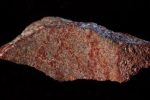Giant flightless birds of the genus Aepyornis disappeared from the island of Madagascar about a thousand years ago. Humans may be responsible for the extinction of the largest bird to ever live on planet Earth. They hunt and kill so-called “elephant birds” for fun. This is proven by the presence of scars that scientists have identified on bird fossils.

click to enlarge
Giant flightless bird, Aepyornis maximus
| Photo: Wikimedia/freework
Until now, historians assumed that the first settlers came to Madagascar Island about four thousand years ago. However, the newly discovered fossil of an extinct bird is around ten thousand years old. “These fossils show that humans inhabited Madagascar at least six thousand years earlier than previously thought,” the BBC news site quoted Dr James Hansford, who works at the Zoological Society of London.
This new discovery not only raises questions in the field of human history, but also proves a very different theory about the extinction of unique animal species. While it is true that Aepyornis became extinct about two thousand years ago, its extinction was a long-term process, despite generally accepted theories.
Which came first, bread or beer? Archaeologists discovered a 13,000 year old brewery
“Our ancestors appear to have lived in Madagascar with giant birds and other now extinct species for more than nine thousand years,” Dr Hansford said.
But the biggest mystery for scientists still remains who the mysterious bird hunter is. “The question is clear – who are these people? And when and under what circumstances did they disappear?” asked study co-author Patricia Wright of the State University of New York. He will then answer himself. “We don’t know the origins of these people, and we won’t know until we find more evidence,” Wright said.
The largest egg in the bird kingdom
The famous “Madagascar elephant birds” include two closely related genera, namely Aepyornis and the smaller Mullerornis. Although they differ in size, they have other characteristics in common. Among other things, its large beak, which is suitable for cracking seeds or eating fruit that falls from trees, and its long, muscular legs, which are directly used for fast running.
Representatives of the genus Aepyornis grow to a height of three meters, while their weight, according to archaeologists, varies between 350 and 500 kilograms. They are also famous for their giant eggs, which exceed the size of many dinosaurs. Its length is about 35 centimeters and its volume is about ten liters.
The oldest in history. Scientists have discovered drawings made 70 thousand years ago

“Unapologetic social media guru. General reader. Incurable pop culture specialist.”








